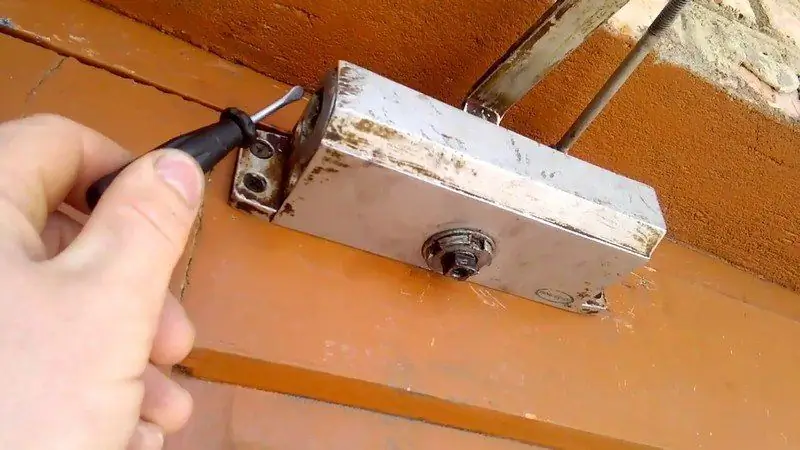
Table of contents:
- Author Bailey Albertson [email protected].
- Public 2023-12-17 12:53.
- Last modified 2025-01-23 12:41.
Door closer repair: how to do it yourself

Although the door closer has a simple and reliable device, sometimes malfunctions may still appear in its operation. Often the causes of a door closer breakage can be eliminated by hand. Any man can do this, it is enough to determine the cause of the breakdown. For long-term and trouble-free operation of the door closer, it is necessary to install and adjust it correctly, after which periodically inspect the device and eliminate the problems that arise in time.
Content
-
1 Door closer device
1.1 Video: door closer device
-
2 Causes of door closer breakdowns and how to fix them
- 2.1 Table: dependence of the size of the door closer on the parameters of the leaf
- 2.2 Required tools
-
2.3 Oil leakage
2.3.1 Video: Refueling the door closer
- 2.4 Lever breakage
- 2.5 Replacing fasteners
-
3 Adjusting the closer
3.1 Video: adjusting the door closer
-
4 Replacing the door closer
4.1 Video: installing a door closer
- 5 Reviews
Door closer device
To ensure the maximum service life of the door closer and trouble-free operation, it is necessary to monitor its condition and eliminate the resulting breakdowns in time. Most of the breakdowns of such a device can be corrected by hand . If you know the principle of the door closer and determine the cause of the malfunction, then it will not be difficult to carry out repair work.
The work of any door closer is based on the accumulation of energy by a pressed spring, after which it is used to smoothly close the door. The process of closing the door leaf is controlled by a hydraulic system, which makes it possible to make precise adjustments and ensure smooth operation of the mechanism.
By the type of installation, door closers can be:
- top location;
- floor.
According to the principle of work, they are divided into two groups:
-
Rack and pinion devices. This is the most common type of mechanism. It uses a leverage system. This solution is in good agreement with the linear force of the closer, due to which the process of opening and closing the door leaf is convenient and smooth. When the door is opened, the force is transmitted through the lever to the cogwheel and rack. Then it activates the piston connected to the spring. When the web is closed, the spring straightens and everything happens in the reverse order. The door closing speed depends on the amount of liquid that is pumped in different phases of the device. For adjustment, special valves are used.

Rack and pinion door closer The force from the thrust to the spring is transmitted by means of gears
-
Camshaft mechanism. The difference from the previous device is that the force from the thrust to the spring is transmitted through the roller and the camshaft. When the cam rotates, a roller connected to the piston moves along its surface and activates the hydraulic system, after which the spring is compressed. This design allows you to select the optimal cam shape, which allows the door to open and close more smoothly. Devices with this mechanism are more convenient to use.

Camshaft door closer The force from the thrust to the spring is transmitted through the roller and the camshaft
Video: door closer device
Causes of door closer breakdowns and how to fix them
Breakdowns of a door closer can occur both due to improper operation and due to wear of individual elements. In any case, there comes a time when the device starts to malfunction and there is a need to repair it.
If the door closer is not repaired in time, then it can completely fail, which will lead to the need to replace it, and this is an additional cost.
To do the repair of a failed mechanism with your own hands, you first need to determine the reason that led to the appearance of the defect
The main reasons that cause door closer breakdowns:
-
weather. If the device is installed on front doors, then it is exposed to the negative effects of increased moisture and temperature changes. All this can cause damage to both metal and plastic parts;

Closer on street doors The mechanism is negatively affected by external weather factors
- sharp opening of the door leaf. If, when opening and closing the door, you apply additional efforts to make the canvas move faster, then this leads to the failure of the specified device;
- door lock. There are models that do not have a door closing delay function. Some owners, to block the canvas in the open position, fix it with a stone or other object, which also negatively affects the operation of the closer;
- overload of the mechanism. If the device is incorrectly selected, when it does not correspond to the weight of the door or when additional force is created on the canvas, for example, heavy objects are rolled or hung on it, the mechanism does not withstand a large load and fails;
- improper care. Like any other device, the door closer requires maintenance and periodic maintenance.
Table: dependence of the size of the door closer on the parameters of the canvas
| Door closer size according to EN classification | Door width, mm | Door weight, kg |
| one | up to 750 | up to 20 |
| 2 | up to 850 | up to 40 |
| 3 | up to 950 | up to 60 |
| 4 | up to 1100 | up to 80 |
| 5 | up to 1250 | up to 100 |
| 6 | up to 1400 | up to 120 |
| 7 | up to 1600 | up to 160 |
Required tool
Cope with the majority of door closer breakdowns within the power of any home craftsman. To do this, you first need to determine the cause that led to the malfunction, and prepare the following tools:
- set of wrenches;
- a set of hex keys;
- pliers;
- screwdriver;
- welding machine;
-
a hammer.

Tools To repair a door closer you will need simple and affordable tools.
Leaking oil
The spring, which is the main working element of any door closer, is located in a sealed housing filled with oil. When oil leaks appear, the smooth operation of the mechanism is disrupted, due to which the door closes abruptly, with a loud bang.
If the slightest oil leaks are detected, urgent measures must be taken to eliminate them. If this is not done in time, then a complete replacement of the device may be necessary.
The procedure for eliminating oil leaks:
- The door closer is removed.
-
A thorough inspection of the device is carried out. If the crack is small, it can be repaired with a conventional sealant. If the place of oil leakage is significant, then the entire mechanism will have to be changed.

Inspection of the door closer A thorough inspection of the door closer is carried out and the places of oil leakage are determined
-
Closer refueling. After the cause of the oil leak has been eliminated, add oil to the housing. To do this, unscrew the adjusting screws and add oil to the required level using a syringe.

Filling the closer with oil Oil in the door closer is topped up with a syringe or pipette
To refuel the door closer, use ordinary machine oil
Video: refueling the door closer
Lever breakage
Most often, door closer breakdowns are associated with lever malfunctions. This element is in the most conspicuous place, therefore it most often fails. It is necessary to periodically inspect the condition of the lever. Depending on the type of its malfunction, the ways to eliminate breakdowns will be different:
- The appearance of corrosion. Under the influence of external negative factors, the lever can corrode. If this happens, then you must immediately clean up such a place, and then paint over it. To prevent the development of corrosion, it is necessary to periodically lubricate the lever with oil.
- Crack. If a crack is found on the lever, it can be repaired using conventional or cold welding. For this, the lever is removed and the malfunction is eliminated, after which the seam is well cleaned so that it is smooth and does not interfere with the normal operation of the mechanism.
- Deformation. If the lever is bent or bent, then it is eliminated with a hammer. The bar is removed, after which it is leveled with a hammer. This must be done carefully, as blows to the lever can lead to cracks and breaks.
If it is not possible to eliminate the damage to the lever, then it can be replaced. It is not difficult to buy a similar part; in specialized stores, door closer levers are presented in a wide range. When buying a new rod, you need to pay attention not only to its size, but also to the method of fixing, as well as the shape of the seat, so that it fits for a particular closer.

If the lever breaks down, then it is replaced
Replacing fasteners
Sometimes the reason for the incorrect operation of the door closer can be associated with the weakening or damage of the fasteners. It is not difficult to eliminate such a cause - it is necessary to replace the failed elements.
When choosing fasteners, pay attention to the following parameters:
- length;
- diameter;
- the form;
-
thread pitch.

The main parameters of the fastener The parameters of the new fastener must correspond to what is changing
Closer adjustment
To ensure smooth and correct operation of the door closer, it must be correctly adjusted. Since there is oil in the closer body, which changes its viscosity as the ambient temperature changes, the mechanism must be adjusted at least twice a year - in spring and autumn. This is especially true for devices installed on the driveway or entrance doors.
There are usually two screws on the door closer, with which all adjustments are made. They are located on the mechanism body in a convenient and accessible place:
- the first screw is used to adjust the main door travel;
-
the second - for the final closing of the canvas, "latching".

Adjusting screws Usually on the closer, the adjusting screws are designated as # 1 and # 2
Before making adjustments, make sure that the closer has been correctly and securely fastened. Then everything is done in the following sequence:
-
Adjust the length of the arm. It should be such that when the canvas is closed, the angle between the plane on which the hinges are located and the lever itself is right.

Lever length adjustment With the canvas closed, the angle between the plane on which the hinges are located and the lever itself was right
- Check the speed of closing the door. If you think it closes too quickly or too slowly, adjustments are made. This is done using screw No. 1. By turning it, the required web speed is achieved in the range of 180-15 °.
-
Latch adjustment. Screw number 2 is used to adjust the speed of final closing of the door. To increase the speed of the “deadlock” it is twisted, and to decrease it, it is twisted.

Closer adjustment First, adjust the speed of the main and then the final door travel
If the closer is adjusted correctly, then the door leaf moves smoothly, and there are no jolts or bumps between the first and second moves
Video: adjusting the door closer
Replacing the door closer
If during the operation of the door closer a malfunction appears that does not allow it to be used further, then the specified device must be replaced. To do this, you must first dismantle it. This is easy to do - just unscrew the fasteners and remove the failed mechanism.
After purchasing a new closer, you must carefully study the instructions attached to it. There is an installation diagram, according to which the locations of the mounting holes are marked on the canvas and box. You need to stock up on drills of the appropriate size.

Installation of the door closer is carried out in accordance with the template attached to it
Pay particular attention to the fasteners. If the weight of the door is large, then you can replace the self-tapping screws that come with the closer with more powerful ones. When the canvas is very heavy, screws can be used to fix the door closer to the door.
After the installation of the door closer is completed, it must be adjusted to ensure smooth opening and closing of the door
Video: installing a door closer
Reviews
In order for the door closer to work correctly and reliably over a long period, it must be constantly maintained in good condition. For this, the mechanism is periodically adjusted, its inspection and elimination of detected breakdowns, lubrication. If the breakdown is identified and eliminated in time, the device will work for a long time, and there will be no need to spend money on buying a new closer.
Recommended:
Door Repair: Basic Faults And How To Fix Them Yourself
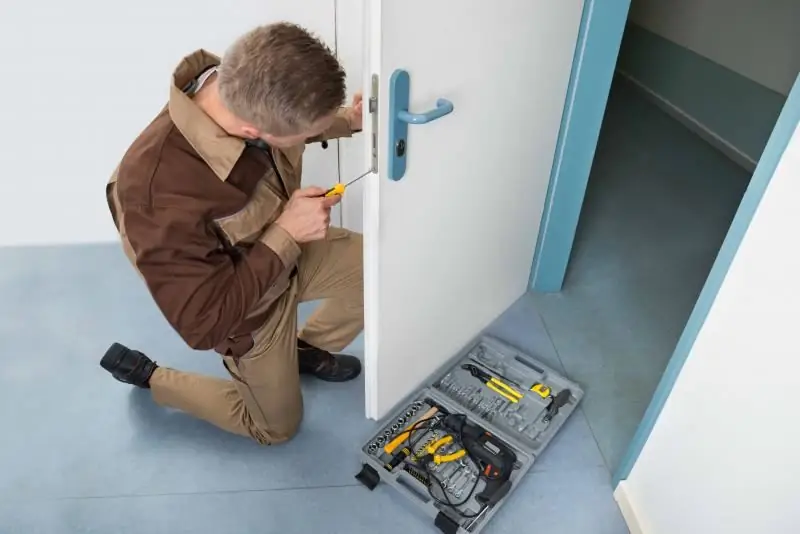
Reasons for door breakage. Repair tools and materials. Basic troubleshooting methods. Door redecoration
Repair Of Plastic Doors: How And What Malfunctions You Can Fix Yourself
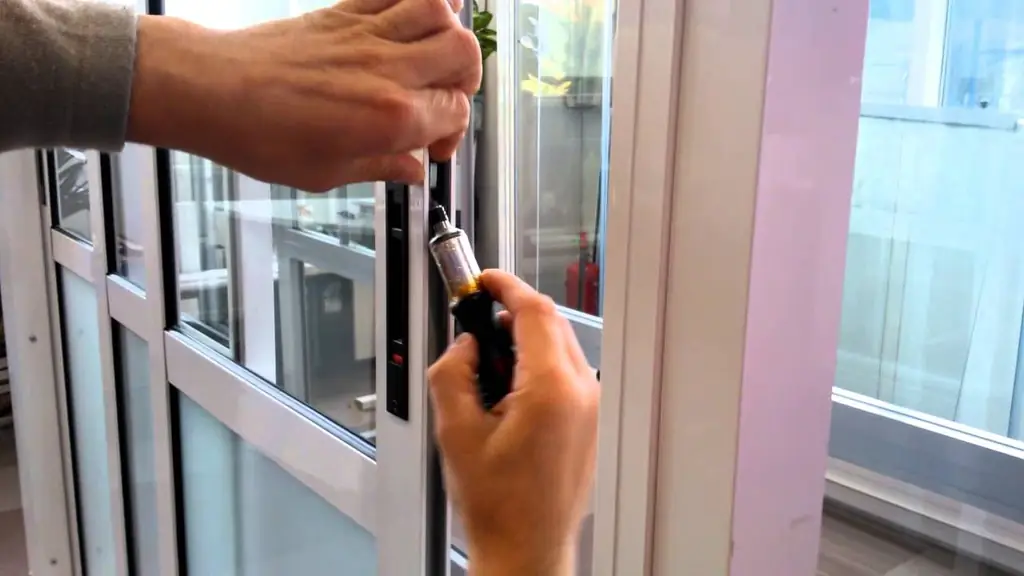
What tool is needed to repair a plastic door. How to fix the handle and lock yourself, replace them and change the glass unit
Door Closer: Functions, Varieties And Device, As Well As What To Consider When Choosing
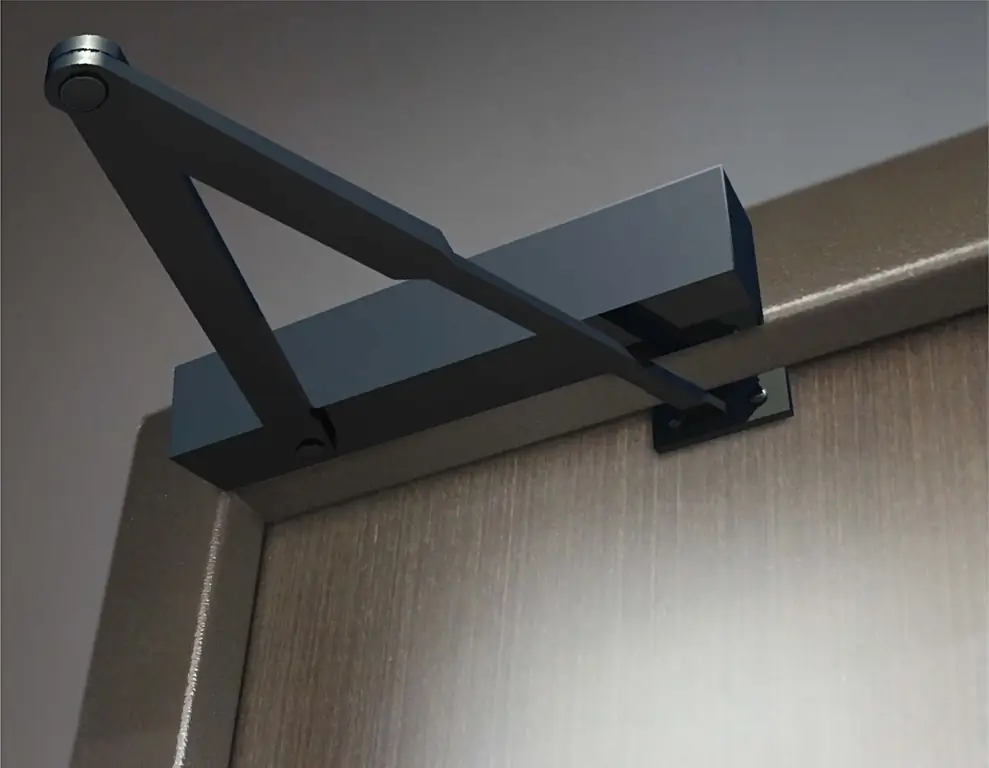
What is a door closer and how it works. Varieties of mechanisms, how to choose the right one. Installation and adjustment
Roller Shutter Repair: What Malfunctions You Can Fix Yourself And How To Do It Correctly
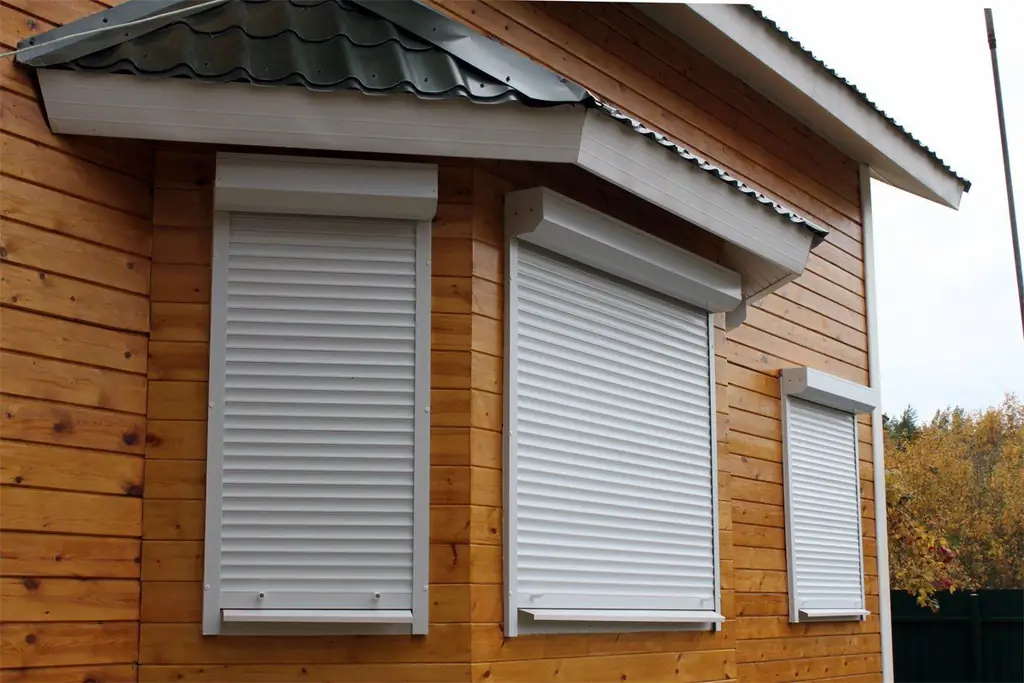
What are roller shutters? Causes of breakdowns and ways to eliminate them. Roller shutter repair and adjustment. Installation and dismantling of roller shutters
Repair Of Door Locks: What Malfunctions You Can Fix Yourself And How To Do It Correctly
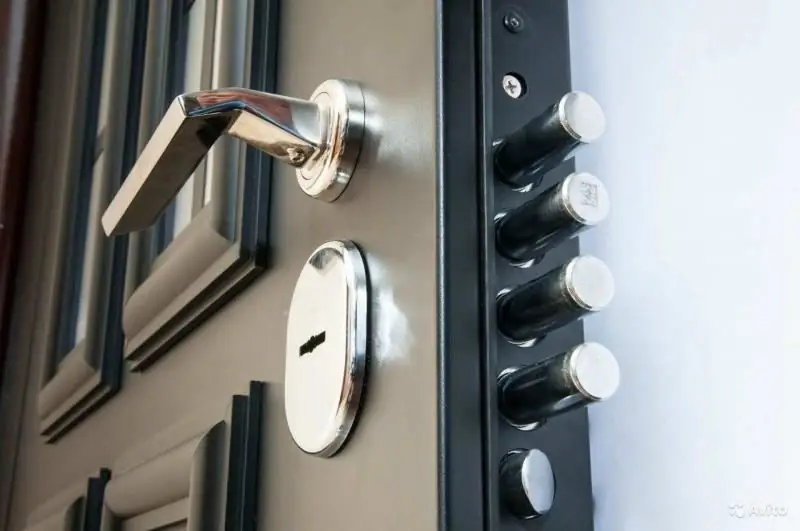
Types of door locks. Possible causes of breakdowns and ways to eliminate them. Defect search algorithm. Step-by-step instructions for replacing different types of locks
